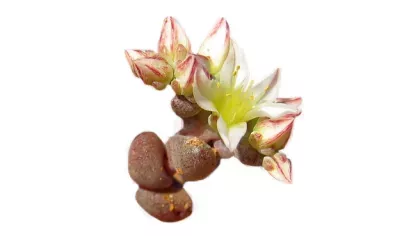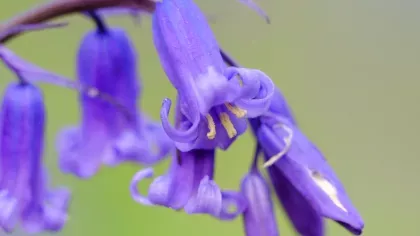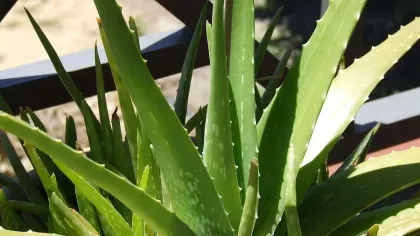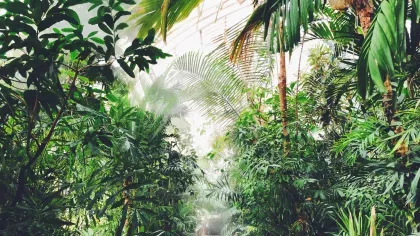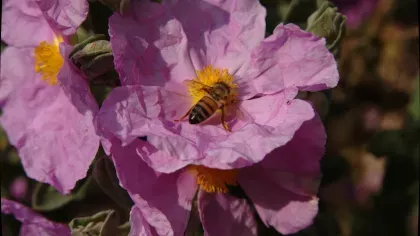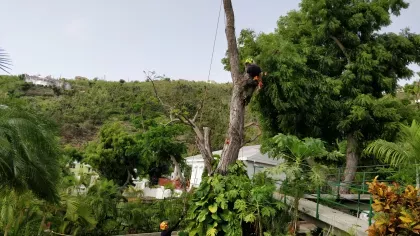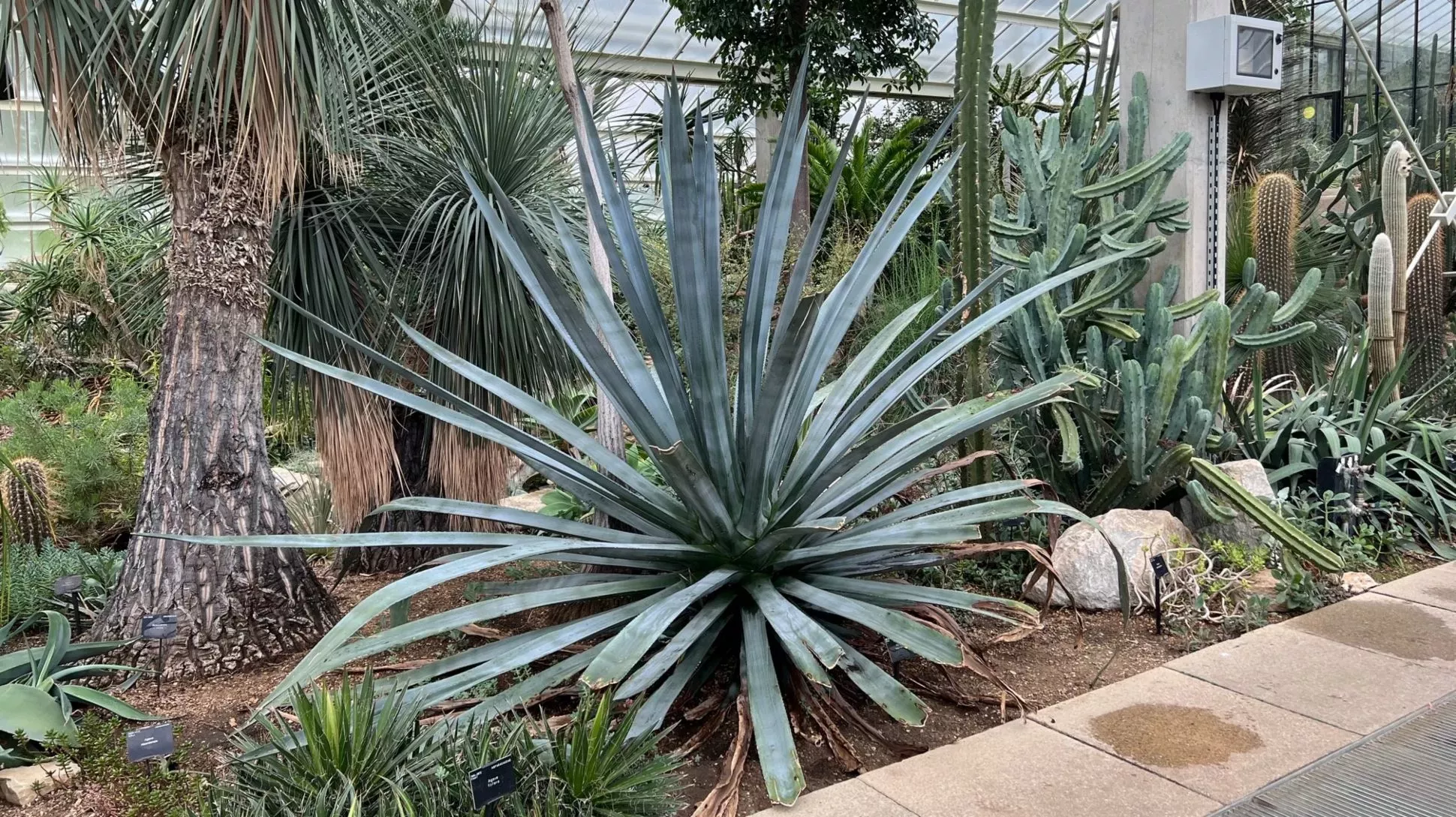
Blue agave
On this page
On the west coast of Mexico, in the state of Jalisco, thousands of blue agave plants are grown for one of the countries’ most famous liquid exports: tequila.
Many blue agave plantations are found around the town of Tequila, hence the name of the drink.
Blue agave is harvested by jimadores, who use a tool called a coa to cut the leaves away from the core of the plant, known as the piña.
The piñas are then baked, pulped and juiced. This is fermented and distilled, to produce ‘silver’ tequila, which can be sold as is, or aged in wooden barrels.
Due to reliance on one blue agave variety, Weber Azul, for tequila production, the genetic diversity of the species is under threat, making it more susceptible to infestation and disease.
Plant description
Blue agave are large succulents. The ‘Weber Azul’ variety used for tequila production grow to around 2m tall, and have blue-grey leaves, which are fleshy and spiked. The other blue agave variety is smaller, with green leaves. After five years of growth, the agave sprouts a stalk that can grow up to 5m tall, which will bloom with yellow flowers.
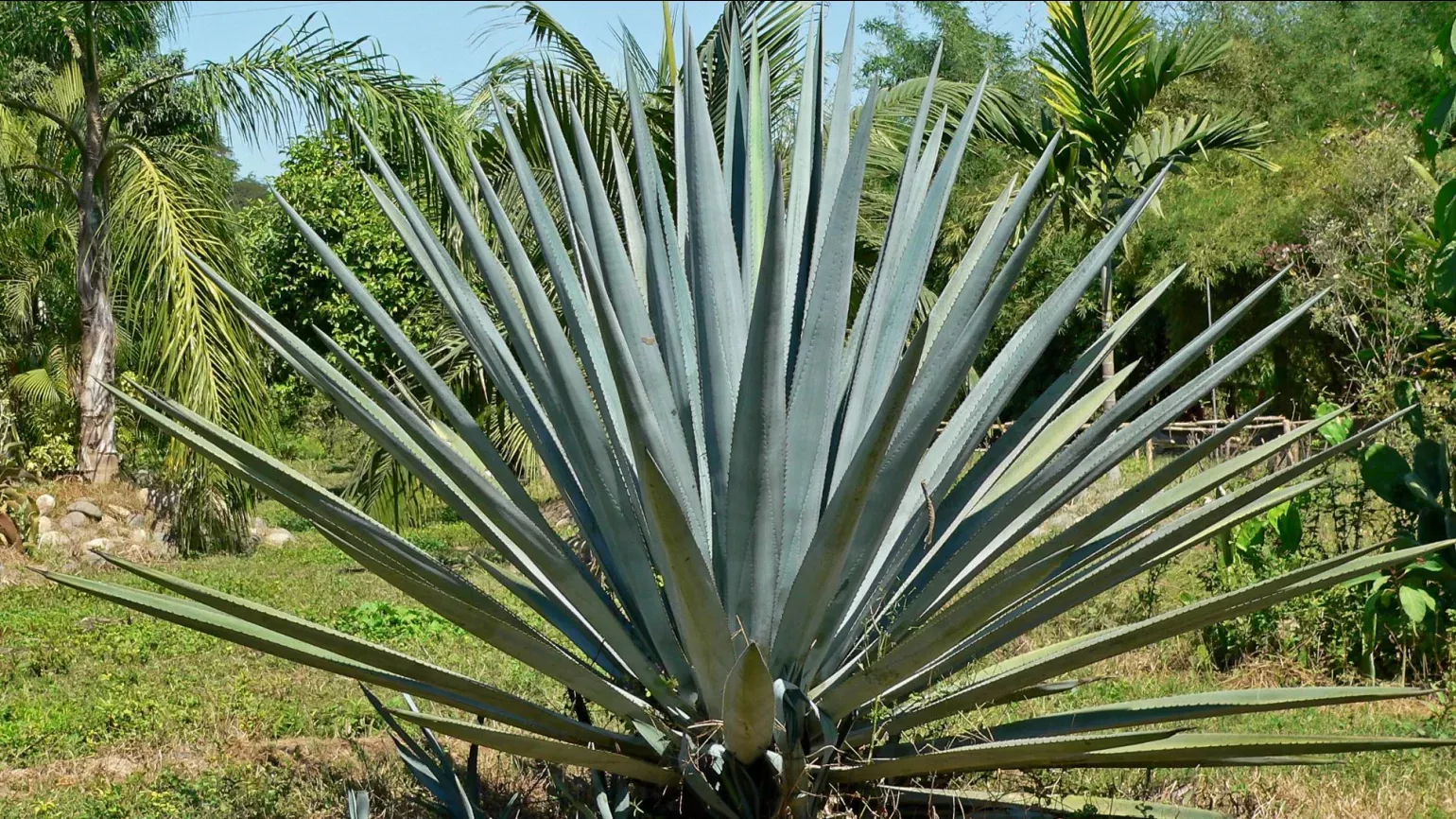
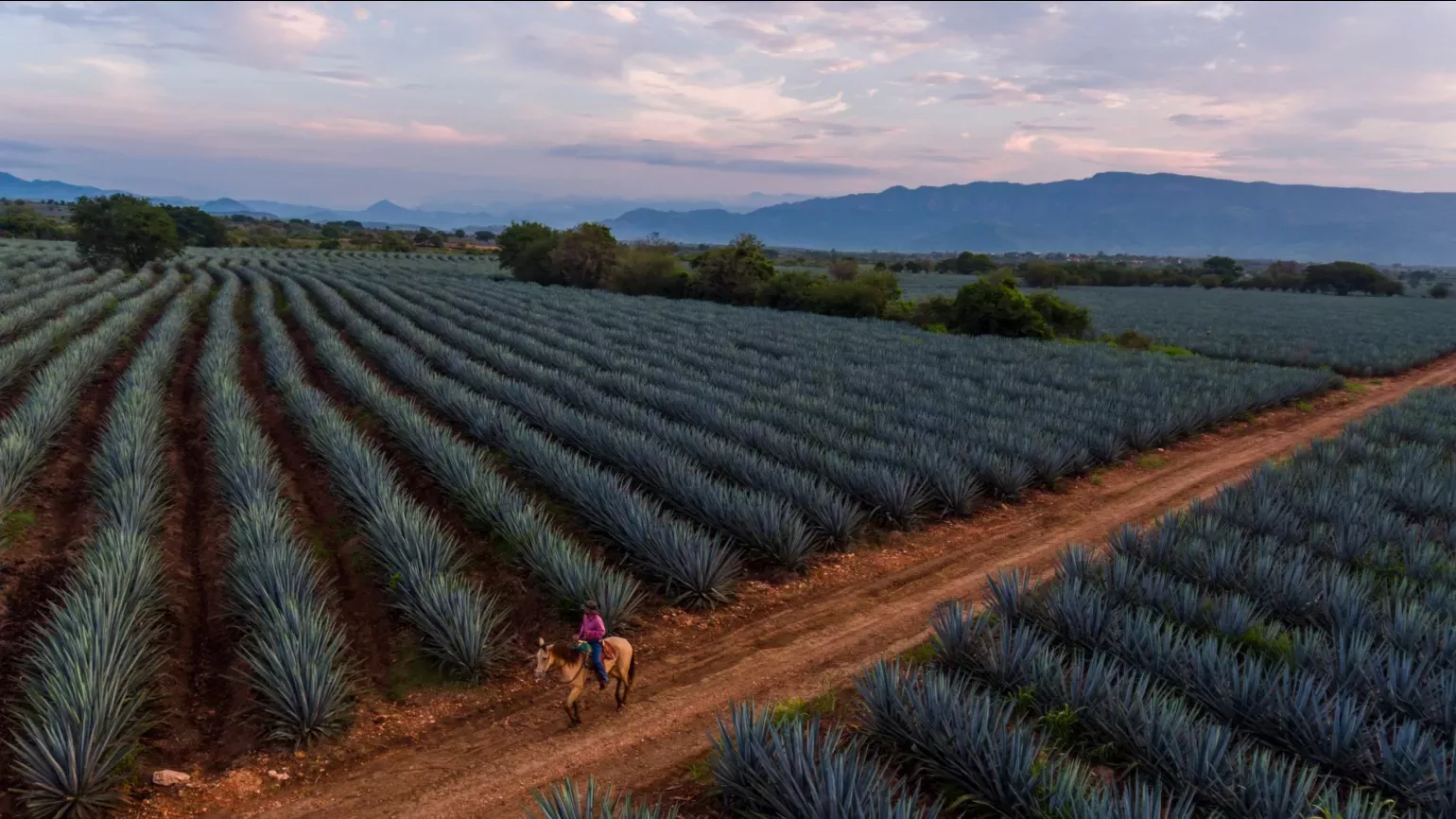
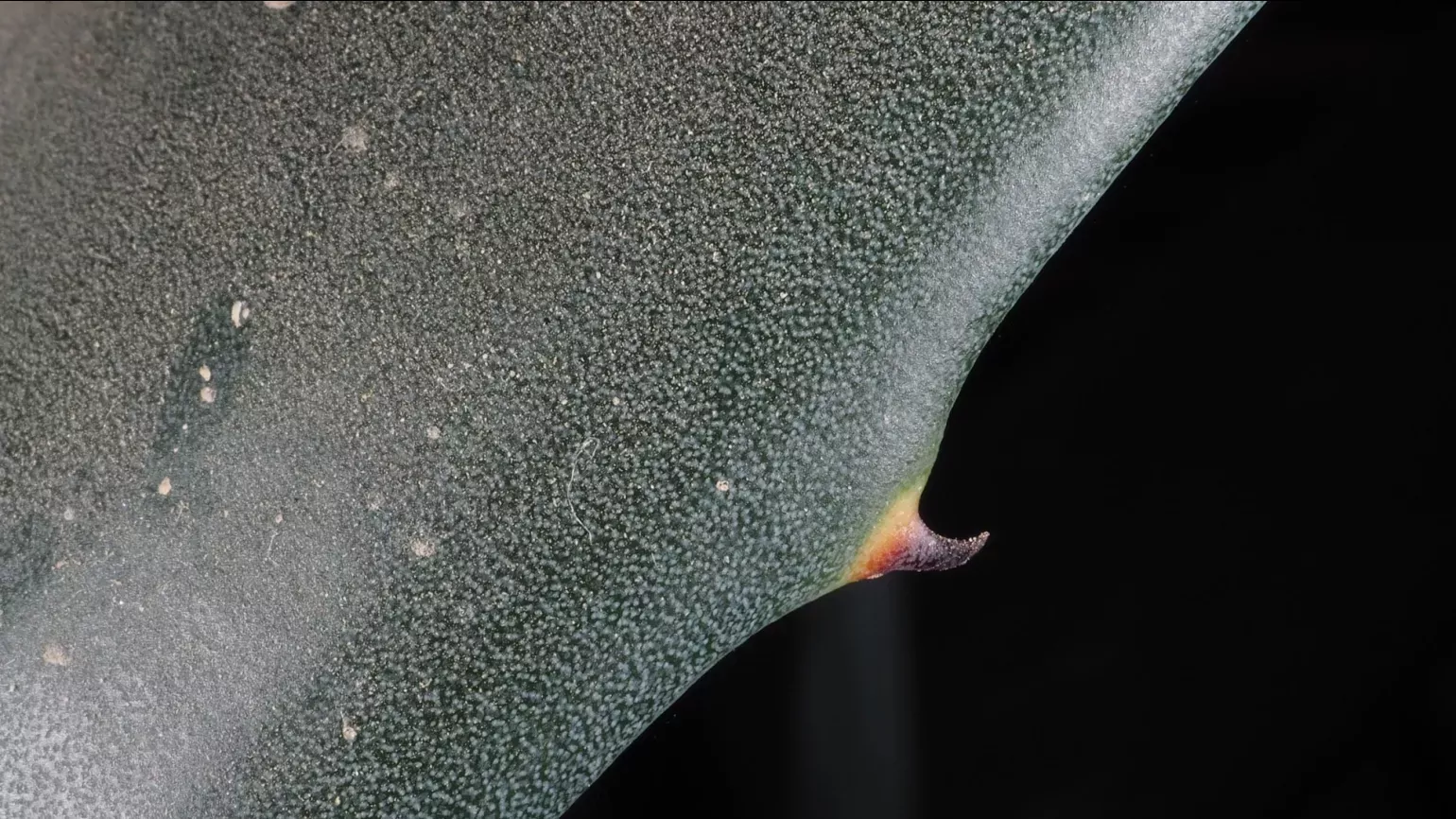
Plant uses
Food and drink
The heart of the blue agave is used in the production of tequila in the state of Jalisco, Mexico.
Blue agave is one of the species of agave used to produce agave syrup, a plant-based alternative to honey.
Materials and fuels
The pulp left over after the piña is mashed is used as animal feed, compost or processed into paper.
Did you know?
Tequila can only be made from blue agave, but other agave species, like Caribbean agave (A. angustifolia) and maguey (A. americana), are used to make the drink mezcal.
The name agave comes from the Ancient Greek word ‘agauos’, meaning ‘noble’.
Where in the world?
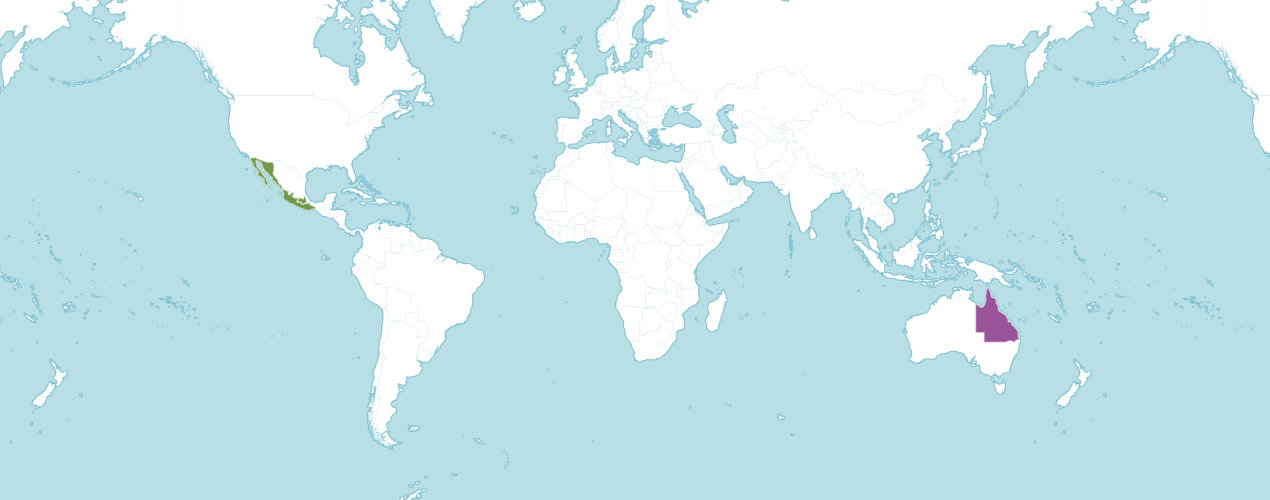
Grows in mineral-rich, loamy soils above 1,500m, in semidry areas in western Mexico.
Find it in our gardens
Kew Gardens
A botanic garden in southwest London with the world’s most diverse living plant collection.
Location
Princess of Wales Conservatory
View map of Kew Gardens